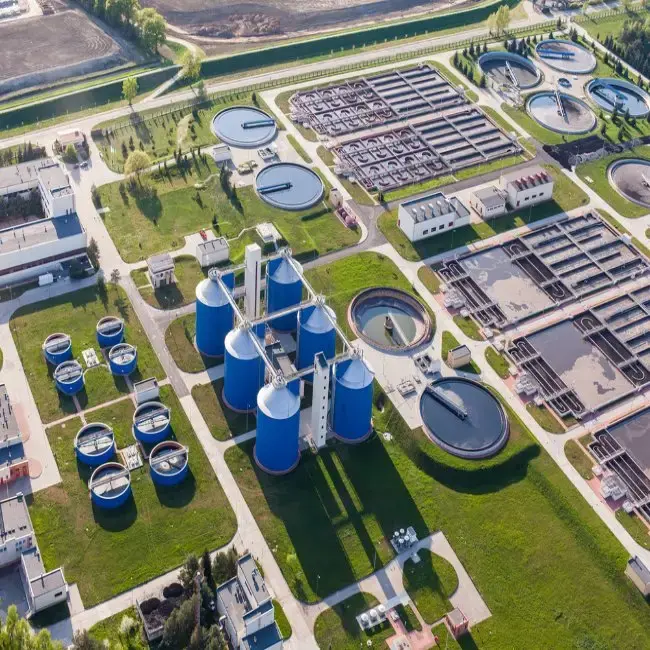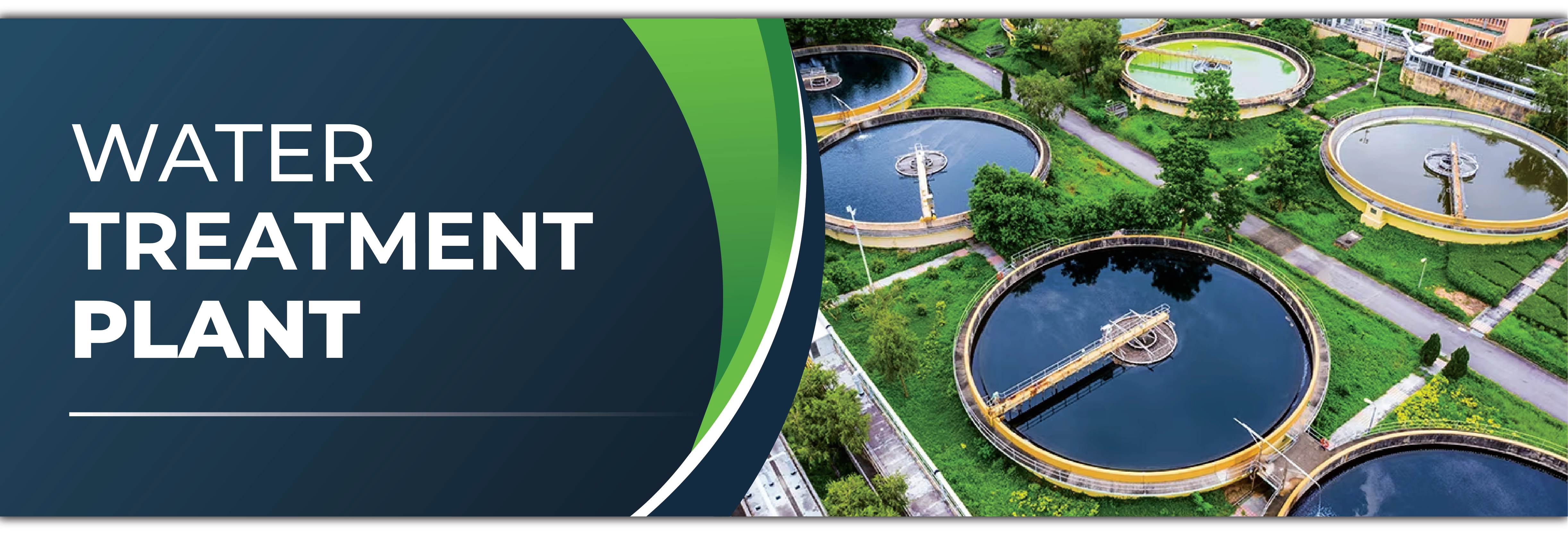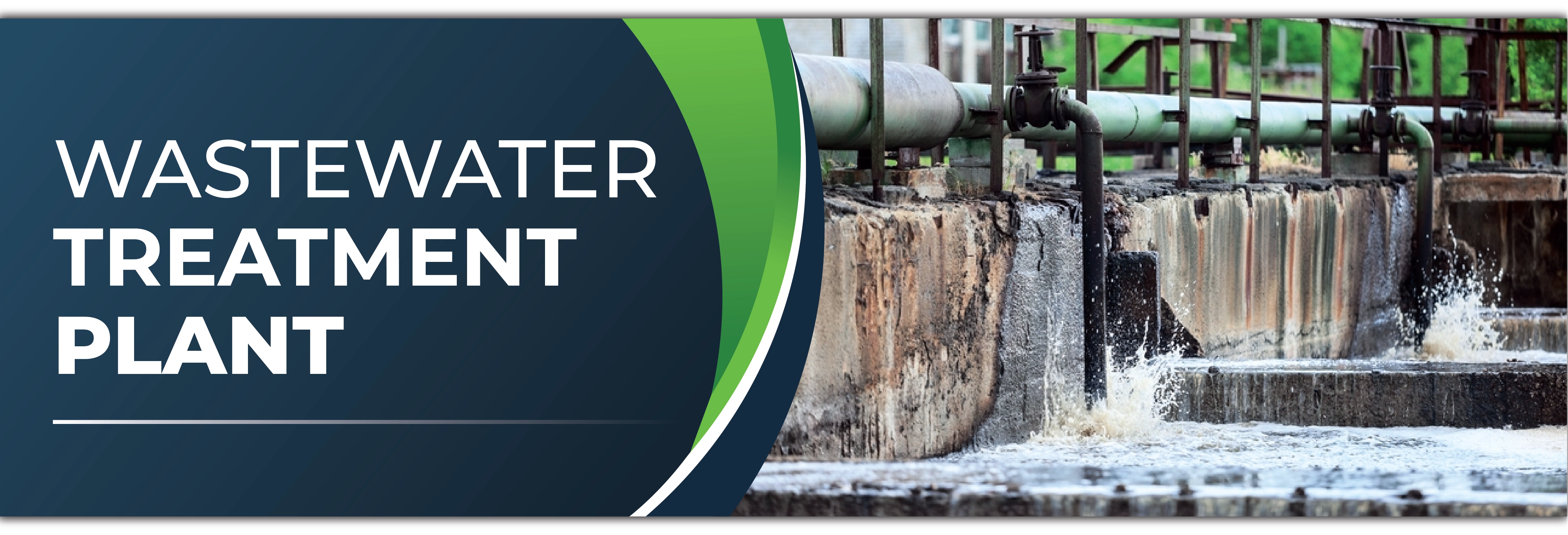What is a wastewater treatment plant?
A wastewater treatment plant is a facility that treats wastewater from residential, industrial, and commercial sources by using physical, chemical, and biological processes to remove pollutants and produce a safely disposable effluent (outflow). The main purpose of a Wastewater Treatment Plant is to protect the environment or fresh water bodies form being polluted by removing contaminants from it and returning treated, clean water to the environment. Depending on the size and nature of the wastewater, the treatment process can involve various chemical, physical, and biological processes. These processes are designed to separate solids from liquids, to remove pollutants, and to reduce the biochemical oxygen demand (BOD) of the wastewater before it is safely discharged. The most common chemical processes used in wastewater treatment are coagulation, flocculation, sedimentation, flotation, chlorination, and disinfection. Physical processes include screening, comminution, filtration, and adsorption. Biological processes include activated sludge digestion, trickling filters, and oxidation ponds. All of these processes are designed to reduce the presence of suspended solids, bacteria, viruses, protozoa, and other contaminants in wastewater before it is discharged into the environment.



Types of WWTP:
-
STP- Sewage treatment plants are an important part of the water cycle, helping to protect the environment and public health. The first step in the treatment process is screening, which removes large debris such as rags, sticks, and plastic bags. After screening, the wastewater is then passed through a grit chamber, where particles such as sand, gravel, and silt are removed. The wastewater is then treated chemically or biologically to remove organic material and suspended solids. Chemical treatments are often used to reduce the concentration of nitrogen and phosphorus, which can cause algae blooms and oxygen depletion in water bodies. Biological treatments use microorganisms to break down organic matter into simpler compounds. The final step in the treatment process is disinfection, which kills any remaining bacteria in the wastewater. This is usually done with chlorine or ultraviolet light, although other methods are sometimes used. After it has been treated, the wastewater is then discharged into a body of water or reused for other purposes.
-
DAF- A dissolved air flotation system is a water treatment process that is used to clean the water from wastewater or other water. The sludge that is collected from the settling tanks is then subjected to DAF treatment, which uses air bubbles that are introduced into the water to attach themselves to any remaining suspended solids. The released air forms tiny bubbles that adhere to the suspended matter, causing the suspended matter to float to the surface of the water, where it may then be removed by a skimming device. DAF is commonly used to remove suspended solids, oils, and greases, as well as other matters like algae and other materials, from water.
-
ETP – Effluent Treatment Plant (ETP) is a plant that treats wastewater from industries such as chemicals, pharmaceuticals, and so on. These plants use a combination of physical, biological, and chemical processes to remove pollutants from the water and make it suitable for reuse or safe discharge into the environment. The common processes include settling, filtration, aeration, sedimentation, and chemical precipitation. After being treated, the water is then passed through a series of filters to further purify it. The water is then tested for chemical and physical parameters before being released into the environment.
-
CETP – A Common Effluent Treatment Plant (CETP) is a wastewater treatment plant that is used to treat wastewater from a variety of industrial sources. The plant works by collecting and treating wastewater from multiple industries, which is then discharged into the environment. CETPs are usually located close to industrial clusters so that the wastewater from the industries can be treated in one central location. This reduces the cost of setting up individual wastewater treatment plants and also helps in the proper utilization of resources.
-
RWH – Rainwater harvesting is the process that is used for collecting and storing rainwater for future use. It preserves natural resources for future use, reduces your dependence on water corporations and governments, and can help protect your home from rising property taxes. It has many applications, such as groundwater recharge, irrigation, and domestic use.
Wastewater Treatment Plant's Process
-
Primary Treatment: In the primary treatment stage, large debris such as rags and sticks is removed from the wastewater. The wastewater is then allowed to settle in a large tank so that the heavier solids settle to the bottom and the lighter solids float to the top.
-
Secondary Treatment: In the secondary treatment stage, the wastewater is then pumped into another tank where it is aerated. The process of aeration introduces oxygen into the wastewater, which encourages the growth of bacteria
-
Tertiary Treatment: In the tertiary treatment stage, the wastewater is pumped through a series of filters to remove any remaining solids. These filters can range from sand filters to activated carbon filters. The filtered wastewater is then disinfected to kill any remaining bacteria before it is discharged into a nearby body of water.
-
Sludge Treatment: The sludge that results from the primary and secondary treatment stages is then treated in a separate tank. The sludge is allowed to settle so that the heavier solids settle to the bottom and the lighter solids float to the top. The sludge is then either treated with chemicals or heated to kill any remaining bacteria before it is removed for disposal
Advantages of a Wastewater Treatment Plant:
-
Improved water quality: Wastewater treatment plants are designed to remove pollutants from water, thus improving the quality of the water for reuse or discharge into the environment.
-
Reduced pollution: Treatment plants help reduce pollution from wastewater, which can cause damage to aquatic life and the environment if not properly managed.
-
Reduced public health risks: Wastewater treatment plants help reduce the risk of waterborne illnesses caused by exposure to untreated wastewater. .
-
Resource recovery: Treatment plants can recover valuable resources from wastewater, such as energy, nutrients, and water from wastewater, which can be used for other purposes or even sold for profit.
-
Reduced soil and groundwater contamination: By properly treating wastewater, treatment plants help reduce the risk of contamination to soil and groundwater.
-
Reduced energy consumption: Treatment plants can significantly reduce energy consumption by using efficient treatment processes and technologies.
-
Reduced operational costs: Treatment plants can reduce operational costs by using efficient treatment processes and technologies.
Wastewater Treatment Plant Manufacturer
FAQs – Wastewater Treatment Plant
Q1. What is WWTP (Wastewater Treatment Plant)?
Ans. An industrial and municipal wastewater treatment plant (WWTP) collects and processes the wastewater. That is, a WWTP processes water to remove waste, grease and floating oils, sand, and any coarse debris that may be present. The operations also remove biodegradable organic material that has been dissolved in the water as well as organic and inorganic materials through settling processes.
Q2. How does a wastewater treatment plant work?
Ans. Wastewater treatment plants use four stages of treatment:
- Preliminary treatment: Using bar racks and screens, big solids (such as bottles, fabric, and plastics) detected in the water are separated from the water.
- Physical-chemical treatments as the first line of defence to silt and precipitate suspended solids and lessen the organic solids' biochemical oxygen requirement. The treatment also neutralises the water and removes greases, oils, and other volatile pollutants.
- Secondary treatment: Organic matter in wastewater is reduced using biological treatments. Anaerobic processes, which oxidise organic matter without oxygen and are followed by secondary settling, are among them. Aerobic processes, which break down organic material in the presence of oxygen, are also included.
- Tertiary treatment: Sophisticated physical, chemical, and biological procedures that get rid of pathogens, heavy metals, nitrogen, and phosphorus. To enable its reuse for tasks like the watering of parks and green spaces, street cleaning, or industrial usage, water is subjected to further treatment in some WWTPs.
Q3. What is benefit of wastewater treatment plant?
- Maintain clean and usable water.
- Waste Reduction.
- Prevents disease.
- Helps the economy.
- Energy Production
Q4. What chemicals are used in wastewater treatment plants?
Ans. The Wastewater treatment plant chemicals used are: Aluminium Sulphate, Sodium Aluminate, Polymer, Sodium Hydroxide, Ferric Chloride, Poly aluminium Chloride, Ferrous Chloride & Hydrochloric Acid.
Q5. Why Wastewater Treatment is so important?
Ans. Wastewater treatment is essential to protecting both the health of people and animals as well as the environment. When wastewater is not adequately handled, it can contaminate our water supplies, harm natural habitats, and cause serious infections.
Effectively, wastewater treatment plants do exactly what their name implies: they treat the water that flows down our drains before releasing it back into the environment. Regardless of the efforts being made to install these plants around the world, more is needed. Water is one of our most valuable resources, and it is being wasted. There are several methods for treating wastewater, and the better the process, the more of it that can be reused before being dumped into the ocean.
The public has begun to speak out against oil companies regarding fracking and wastewater, and the rules are gradually changing, particularly in terms of transparency and environmental effects. It's a good thing the industry is being scrutinised because the more transparency required by law, the better. We must raise the bar for oil companies, mines, and other large-scale industries, which have been unregulated and sold to the highest bidder for far too long.










